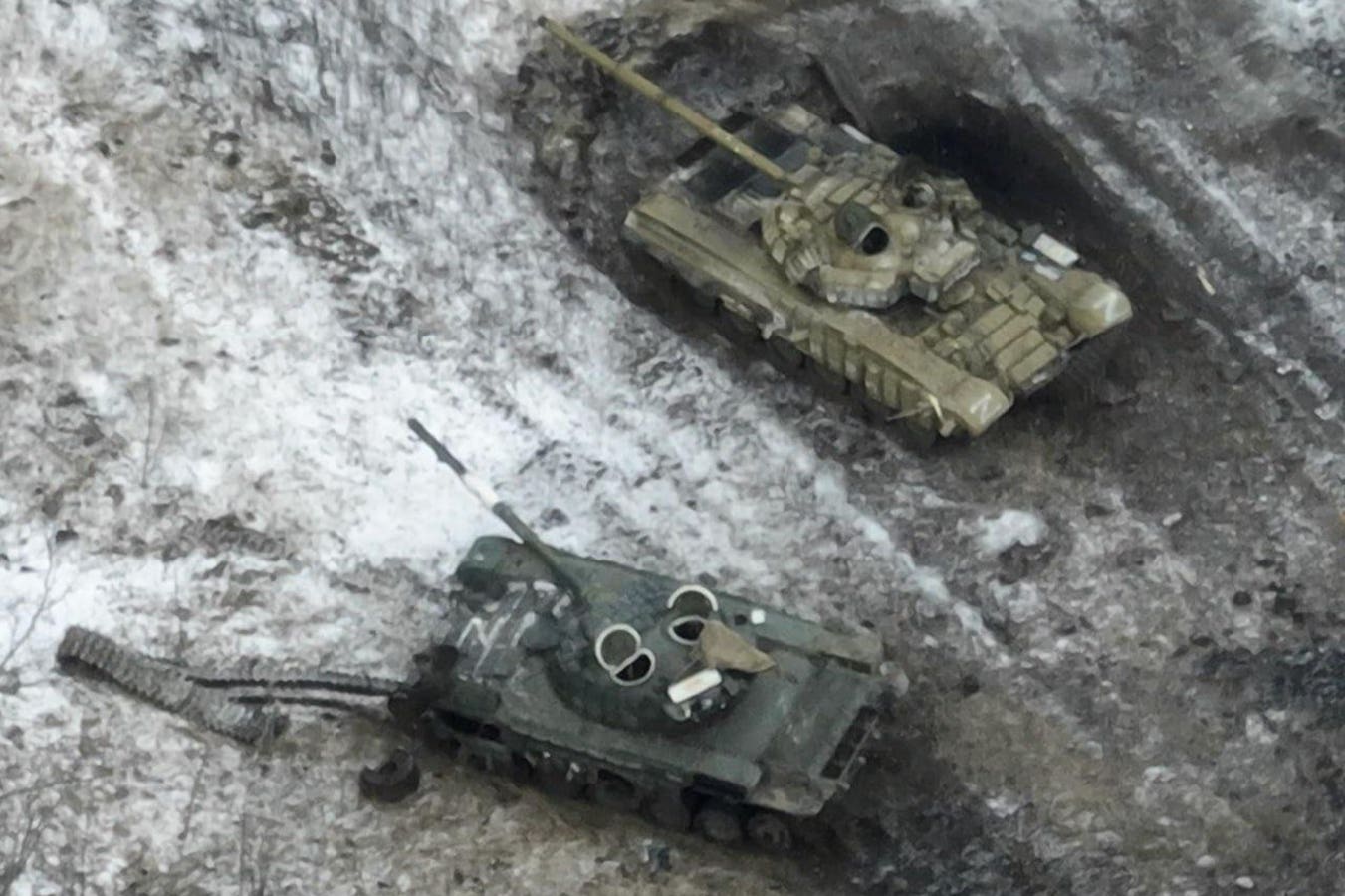After losing hundreds of tanks trying and failing to capture Kyiv in early 2022, and struggling to expand production of new tanks that summer, the Russian army in mid-2022 reached deep into its stocks of old Cold War tanks—and started pulling out working vehicles.
T-62s that the Soviet Union built in the 1960s and upgraded in the 1980s. First-generation T-72s and T-80s from the 1970s. And a year later, as tank write-offs approached 2,000—two-thirds of Russia’s pre-war force—even T-55s from the late 1950s.
Friends of Ukraine scoffed. But Russia’s own fellow travelers defended the practice of towing a 65-year-old T-55 from some vehicle park, replacing the 41-ton tank’s seals, re-tuning its 580-horsepower diesel engine and hauling it by train to the Ukraine front.
After all, Russian regiments and brigades wouldn’t dare assign a T-55 with its thin steel armor to a direct assault on Ukrainian positions. No, the Russians would use the T-55s and hundreds of other restored obsolete tanks as crude howitzers: position them under cover many miles from the front, angle their guns high in the air and fire at the Ukrainians without risking direct return fire.
That was then. Today, as Russia’s wider war on Ukraine grinds into its third year—and Russian tank losses exceed 2,600, according to Oryx—regiments routinely are rolling their four-person T-55s and T-62s and three-person, first-generation T-72s and T-80s into direct fights with Ukrainian brigades.
Just ask the Ukrainian drone-operator “Kriegsforscher.” They’ve been on the front line long enough to see the Russian armor corps devolve back to the 1980s.
Kriegsforscher recently posted, on the social-media site formerly known as Twitter, a thread documenting some of the Russian vehicles their team has knocked out.
The thread begins in the summer of 2023. “You might notice a T-62 at the beginning of the thread,” Kriegsforscher wrote. “Back then it was almost impossible to see.”
But in more recent assaults, T-62s and T-55s are commonplace. Kriegsforscher’s team recently plinked two T-62s around Vodiane in the east, 13 T-62s and a T-55 in the vicinity of Novomykhailivka, also in the east, and more than 10 T-62s around the Ukrainian bridgehead in Krynky, in the south.
Asked if the Russians actually deployed the geriatric T-55 with its inadequate armor—just 200 millimeters thick at its thickest—as a tank and not in some other role, Kriegsforscher was unequivocal. “As an actual tank,” with the addition of some explosive reactive armor.
Some of these tanks have received emergency upgrades: new radios, modern-ish optics, fresh layers of reactive armor. Many of the tanks have no upgrades, however. They are as obsolete today as they were 40 years ago.
But any tank, even a very old one, is a threat to lightly-supported infantry. And Ukrainian infantry are increasingly lightly supported as Ukraine’s artillery ammunition runs out—the inevitable consequence of Russia-aligned Republicans in the U.S. Congress blocking further U.S. aid to Ukraine starting last fall.
“Right our mutual enemy has more ammo, firepower, tanks and soldiers than one year ago,” Kriegsforscher observed. It doesn’t matter very much to the Ukrainians in the trenches how old those tanks might be. Not as long as they can’t fire back with their most powerful guns.
It’s cold comfort that Russia’s production of new tanks still can’t replace all the tanks it’s losing in Ukraine—and that stocks of Cold War vehicles are finite.
Yes, Russia might run out of tanks. Eventually. But not in time to save Ukraine from a brutal 2024. A year that likely will be defined by the Ukrainian army’s desperation for artillery shells. “This year will be super hard,” Kriegsforscher warned.
Read the full article here





